
-
Find the right food for your petTake this quiz to see which food may be the best for your furry friend.Find the right food for your petTake this quiz to see which food may be the best for your furry friend.Featured products
 Hill's Science Diet Adult Oral Care Chicken, Brown Rice & Barley Recipe Dog Food
Hill's Science Diet Adult Oral Care Chicken, Brown Rice & Barley Recipe Dog FoodClinically proven kibble technology to reduce plaque & tartar build-up
Shop Now Adult Small & Mini Lamb Meal & Brown Rice Recipe Dog Food
Adult Small & Mini Lamb Meal & Brown Rice Recipe Dog FoodFor the faster metabolism of Small & Mini dogs
Shop Now Adult 7+ Small & Mini Chicken & Brown Rice Recipe Dog Food
Adult 7+ Small & Mini Chicken & Brown Rice Recipe Dog FoodFor the unique nutritional needs of mature Small & Mini dogs
Shop NowFeatured products Adult Urinary Hairball Control Chicken & Rice Recipe Cat Food
Adult Urinary Hairball Control Chicken & Rice Recipe Cat FoodActively supports the health of the whole urinary system
Shop Now Adult Indoor Chicken Recipe Cat Food
Adult Indoor Chicken Recipe Cat FoodSupports energy level and beautiful fur in indoor cats
Shop Now Hill's Science Diet Adult Sensitive Stomach & Skin Dog Food
Hill's Science Diet Adult Sensitive Stomach & Skin Dog FoodHighly digestible recipe, gentle on stomachs. Nourishes skin & promotes a lustrous coat
Shop Now -
Featured articles
 Easy DIY Dog & Cat Toys: Nine of Our Favorites
Easy DIY Dog & Cat Toys: Nine of Our FavoritesBrowse this comprehensive guide for several of our favorite DIY dog and cat toys that are sure to put a little pep in your pet's step.
Read More 15 Pet-Friendly Cities Ideal for a US Road Trip
15 Pet-Friendly Cities Ideal for a US Road TripCheck out our list of pet-friendly U.S. cities that are excellent travel options, offering off-leash dog parks and pet-friendly restaurants & hotels.
Read More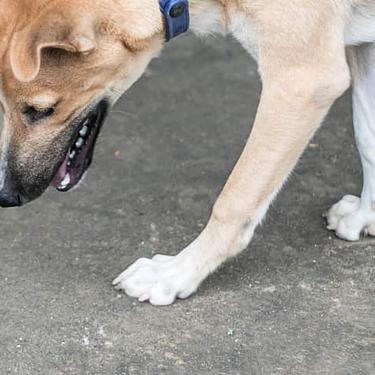 My Pet Ate a Lizard — What Should I Do?
My Pet Ate a Lizard — What Should I Do?Learn what to do if your pet eats a lizard, including whether they can be toxic and symptoms to keep an eye on when they've swallowed one.
Read More -


Your energetic cat doesn't claw at your couch just to annoy you. Cats need an outlet for their scratching behavior, and you don't have to spend a ton for a store-bought structure that satisfies this instinct. You can easily construct a DIY cat scratching post with items you have around the house.
Most pet parents learn the hard way their cat needs to scratch this genetic itch. And if given the opportunity, she'll turn your curtains, carpet, or even your couch into shreds to do so. Here are five ideas for how to make a homemade cat scratching post using simple, inexpensive items.
1. Cat Scratching Book Board
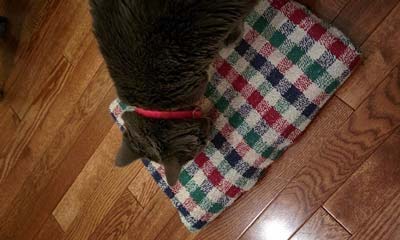
A cat scratches for a variety of reasons: to shed the outer layer of her claws (which you may find around the house), stretch her body, and leave her scent to remind you who the real boss is in the house. Whatever her reason, you can indulge her with only two common items and a remedial knowledge of sewing.
What You'll Need
- Large hardback coffee-table-sized book
- Large, cotton bath towel
- Heavy-duty thread
- Sewing needle
If you don't have an old hardcover book you're willing to let your cat dig into, you'll find plenty at a second-hand shop. World atlases have a perfectly smooth cover, but any type of hardback book will do. When choosing a towel to dress it in, be sure to use a plush material that doesn't have a lot of loose threads, which could cause your furry kitty's claws to snag.
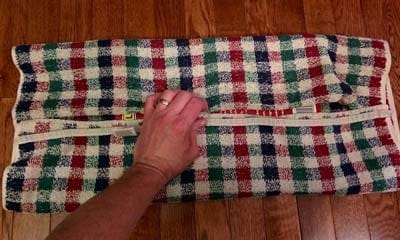
How to Make It
Fold the towel in half to double-up the material. Lay it flat on the floor, then place the book in the middle. Fold your towel over the book, gift-wrap style. Pull taught so there are no folds on the front side; you want a flat, durable scratching surface. Stitch together the seams where they meet on the back, flip it over, and voila: You have a cat scratching book board.
It's best to set this board flat on the floor rather than lean it against something; the heavy weight of the book can cause the board to fall and startle your cat.
2. Crazy Cool Carpet Scratching Board
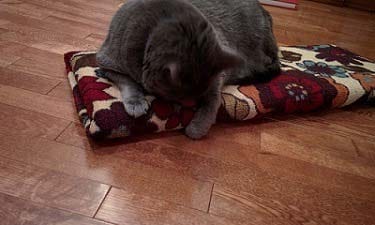
As an alternative to a book board, you can build a carpet scratching board (no books are harmed in the making of this item).
What You'll Need
- Flat board (scrap wood or a discarded book shelf work well)
- Small area rug or carpet remnant
- Hammer
- Small, standard-sized upholstery tacks. You can purchase a pack of these inexpensively at your local hardware store.
There are no length or depth requirements for the board, so you can choose a size that fits your cat's needs (the board in the picture is a particle board bookshelf). This board will lay flat on the floor or hang from a wall, so it doesn't require a base. When choosing a rug, keep in mind cats prefer rough fabric, again with very few loops or loose threads their claws can snag on. Luckily, finding a sturdy but inexpensive area rug for this board is all too easy, and yields a cat accessory you won't have to hide when company comes over.
How to Make It
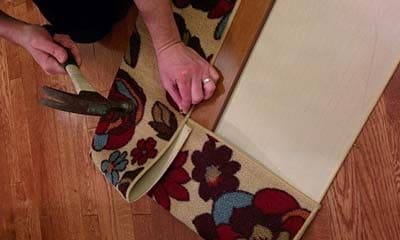
Place the rug upside down on the floor and plant the board on the back of the rug. Fold up an edge of the rug and secure it with tacks. Place these tacks along the edges lengthwise, where the rug and board meet, in order to secure it properly. Repeat this step for the remaining three sides. You don't want to tack where the rug is folded more than twice because the tack won't secure more than two layers deep. Having trimmed the excess material, use longer nails to secure it. Another option is to leave the rug folds "as is"; they create a nice spring-action when the board is flat on the floor. Flip over carpet-side up.
Note: The cat pictured above loved this scratching board so much that he refused to move for a very long time.
3. Cat Scratching Cardboard Stack
If your ideal DIY cat scratching post involves just ten minutes of assembly, this is the project for you.
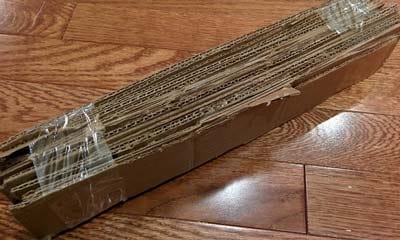
What You'll Need
- Cardboard box, any size or shape
- Packing tape, any color
- Box cutter
With this item, you don't have to worry about cutting a perfectly straight edge. You'll get more scratching surface if it's somewhat jagged.
How to Make It

Fold the box out flat on the floor. With the box cutter, detach the four sides of the box so that you have four sections of cardboard. Cut each cardboard section into strips that are two inches wide and 15 to 30 inches long. There are no real length requirements, though, so feel free to go crazy. Stack strips on top of one another so that the rough, cut edges form a flat surface. Wrap packing tape tightly around each end to secure the strips. Set it on the floor and let your cat have at it.
Another benefit? You don't have to use the whole box, so even if you quit after just two sections, you'll still have an awesome DIY cat scratching toy to show for your effort.


Tasty Tips
4. Bookshelf Cat Scratching Hideout
If you're in need of a cat scratching post but don't have room for one, consider this setup, which combines two things a kitty loves to do: scratch fabric and enclosed spaces.
What You'll Need
- Bottom shelf of a bookcase. Be sure the furniture is secured to the wall to keep it from collapsing or tipping over.
- Carpet material, cut to fit the shelf's dimensions
- Heavy, double-sided tape
Hot glue or upholstery tacks are other adhesive options if you're willing to make this space a permanent home for your kitty.
How to Make It

Empty the bookshelf completely. Measure out each carpet piece to fit every wall of the shelf individually (top, bottom, back, and two sides). Secure the carpet remnants with your tack, hot glue, or similar adhesive. You might consider lining the outside of the shelf too, as high up as your furry friend can reach when stretching. She'll appreciate the extra scratching surface!
5. Staircase Spindle Cat Scratching Rail

This idea takes the DIY cat scratching post to another level, offering your furry family member multiple scratching options while distracting her from tearing up the carpet on the stairs. It's a win-win for both you and her.
What You'll Need
- Staircase with spindles
- Upholstery fabric, carpet remnant, or small area rug
- Heavy-duty stapler and staples or needle and heavy-duty thread
When choosing fabric, look for a textile that goes well with your décor, and purchase enough to replace when your cat shreds this roll. Instead of stapling, use a needle and heavy-duty thread to stitch the fabric. Staples can be easy for certain cats to pull out if the fabric is particularly thick or her claws have yet to be trimmed.
How to Make It
First, decide how many of the spindles you want to give your cat; two to three should suffice, but she'll let you know if she wants more. Cut the fabric to size so that it wraps around the spindle without too much excess (you do want the fabric to overlap a bit so that you can secure it). Staple or stitch the fabric ends together.

This scratching post option offers your kitty a fun way to exercise, and keeps her from shedding her nails on the stair treads instead.
Once you know how to make a cat scratching post, it won't be long before your furry cat discovers her fun new accessory (most likely, she was watching you build it the entire time anyway). If she's hesitant to try it out, sprinkle some catnip on the fabric to attract and keep her attention. Still not taking to it? Walk away. Cats often don't like to be watched exploring a new contraption.
No matter which DIY cat scratching post you choose, you'll feel a sense of accomplishment making something cool and creative for your cat, and you can really make it your own by choosing materials that reflect your own sense of style. Happy building!
Image sources: Christine O'Brien


Christine O'Brien is a writer, mom, and long-time cat parent whose two Russian Blues rule the house. Her work also appears in Care.com, What to Expect, and Fit Pregnancy, where she writes about pets, pregnancy, and family life. Find and follow her on Instagram and Twitter @brovelliobrien.
Related products
Related articles

Put your cat on a diet without them knowing
Our low calorie formula helps you control your cat's weight. It's packed with high-quality protein for building lean muscles, and made with purposeful ingredients for a flavorful, nutritious meal. Clinically proven antioxidants, Vitamin C+E, help promote a healthy immune system.
Put your cat on a diet without them knowing
Our low calorie formula helps you control your cat's weight. It's packed with high-quality protein for building lean muscles, and made with purposeful ingredients for a flavorful, nutritious meal. Clinically proven antioxidants, Vitamin C+E, help promote a healthy immune system.

